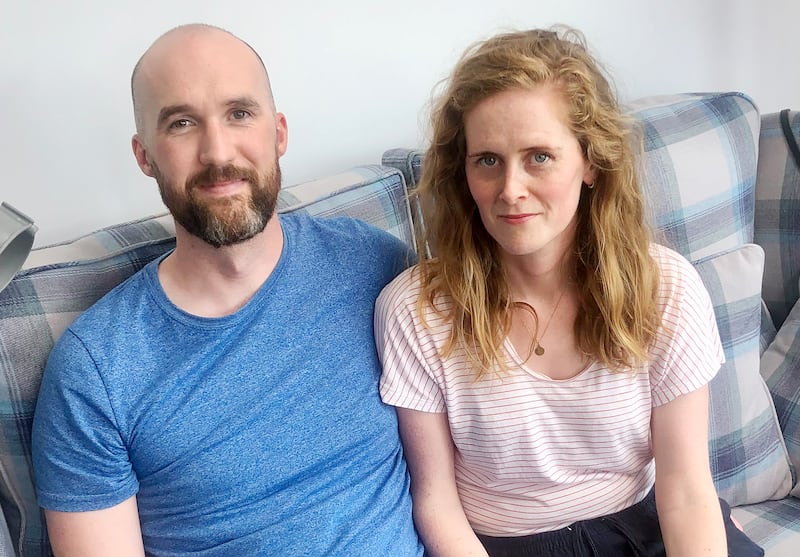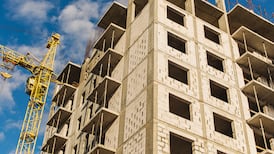This was a big week for Simon Rowan. It marked the moment after 4½ months away that he was finally able to return to his home in Galway.
It was a very different experience to when he had last left his house in January. Then he had walked out from the driveway wheeling his bike. This week, he walked back in through the front door with the aid of two crutches.
Simon, his wife Ruth Talbot, and their five-year-old son live to the east of Galway city. Simon, a life-long cyclist, has always used his bike to commute to work.
One evening in January, as he cycled home from work, he was involved in a collision at the Skerritt Roundabout on the Dublin Road, just beside the Atlantic Technology University and the Garda divisional headquarters.
READ MORE
The accident left him with multiple bone breakages including a broken pelvis in addition to other serious trauma. Simon had to undergo two major surgeries during his two-month stay in hospital. He was then transferred to a rehabilitation hospital for a further 2½ months until this week.
He details the list of injuries: “My wrist was broken. My pelvis snapped in half. My femur was broken. I had broken fractures in both feet. I had basically what they call a degloving injury on my left thigh where skin was separated from the bone. I had a 15cm wound on my abdomen apparently that was down all the way to my internal organs.”
[ How haphazard development made Galway the most choked city in IrelandOpens in new window ]
Four and a half months later, he was finally able to return home permanently, but with a long journey of recovery ahead of him. Said Ruth: “It’s a big step to get to this point. He has done really well in rehab and is now walking with two crutches. Unfortunately there is still a long way to go to return to where he was.
“Only in the last month or so have Simon and I truly appreciated the extent and impact of his injuries. So while we’re thrilled he’s home, we still have a very long road ahead.”
The terrible potentially life-changing situation faced by Simon has made him and Ruth reflect on the experience. Road incidents can happen even in the safest of environments but, following what happened in January, both came to the conclusion that Galway was an unsafe place for a cyclist.

That was particularly damning given where the family had moved from. Until Covid, they had lived in Los Angeles, a city specifically designed for cars with multilane (and traffic-choked) motorways. During the years they lived there, Simon cycled everywhere without ever having a serious incident.
When they arrived back in Galway, both were surprised at the lack of specific cycling infrastructure in the city. Part of Simon’s journey took him across the Quincentennial Bridge, which at least has a cycle lane. It is about the only continuous lane among a major thoroughfare in the city.
Galway has been a laggard when it comes to cycling infrastructure. Only a handful of new cycling lanes have been built in recent years. Councillors overturned plans for a cycle lane on the Salthill promenade to give priority to parking. The same parking-first approach happened in Ballyloughane on the east of the city. The same is expected to happen on Dr Mannix Road and, from past experience, in any residential area where car parking might be compromised. There are few segregated cycle lanes anywhere in the city. The greenway along the coast from Salthill to Barna also looks like it has been long-fingered as has the one from the city to Moycullen.
[ Ian O’Riordan: Finding space and peace between driver and cyclist on Irish roadsOpens in new window ]
Unlike other Irish cities, Galway has given priority to private cars over other road users. In fairness to the council, it has produced some ambitious plans to encourage modal shift. Its active travel unit is now staffed by 12 people. A number of new cycle lanes have been, or are being, developed, including one from the Claddagh to the university. Ironically, the roundabout where Simon’s incident happened will become part of a new cross-city bus priority route with good cycling lanes. But it will be the end of the decade before that will be completed. In comparison to other cities where wholesale changes have been taking place, the progress has been piecemeal.
In the meantime, Simon’s verdict is damining: “I would say this is the worst place I’ve ever cycled by a long shot,” he said. “When I went to LA I expected it to be really bad. But it’s actually so much better than here.”
He said that in the most car-centric city in the world, drivers ensure safe distances from cyclists and the authorities there have developed networks of cycle-friendly routes.
“I have been thinking about what makes Galway so bad. It keeps on coming back to the council and councillors and the negativity towards cyclists here.
“The decision on the prom [cycle lane] really got to me especially now after my accident… To me it was that car parking space was more valuable than a child being safe, or some adults being safe on a bike.”
Ruth urges a change of attitude in Galway to avert further incidents like the horrific one that happened to her husband. “People are encouraged to cycle but there’s nothing happening to make it safer. You are still expected to share the road with every kind of vehicle: cars and buses and trucks.
“It is frustrating and heartbreaking to see that this happened to my husband. And to think that still nothing might change because people don’t like change.”
Facing a long period before full recovery, Simon’s final message is also one that reflects his anger and frustration at what occurred.
“These sorts of accidents are happening all the time. Like, they know where it’s at. They know where the traffic is. And not a finger lifted to do something about it.”



















